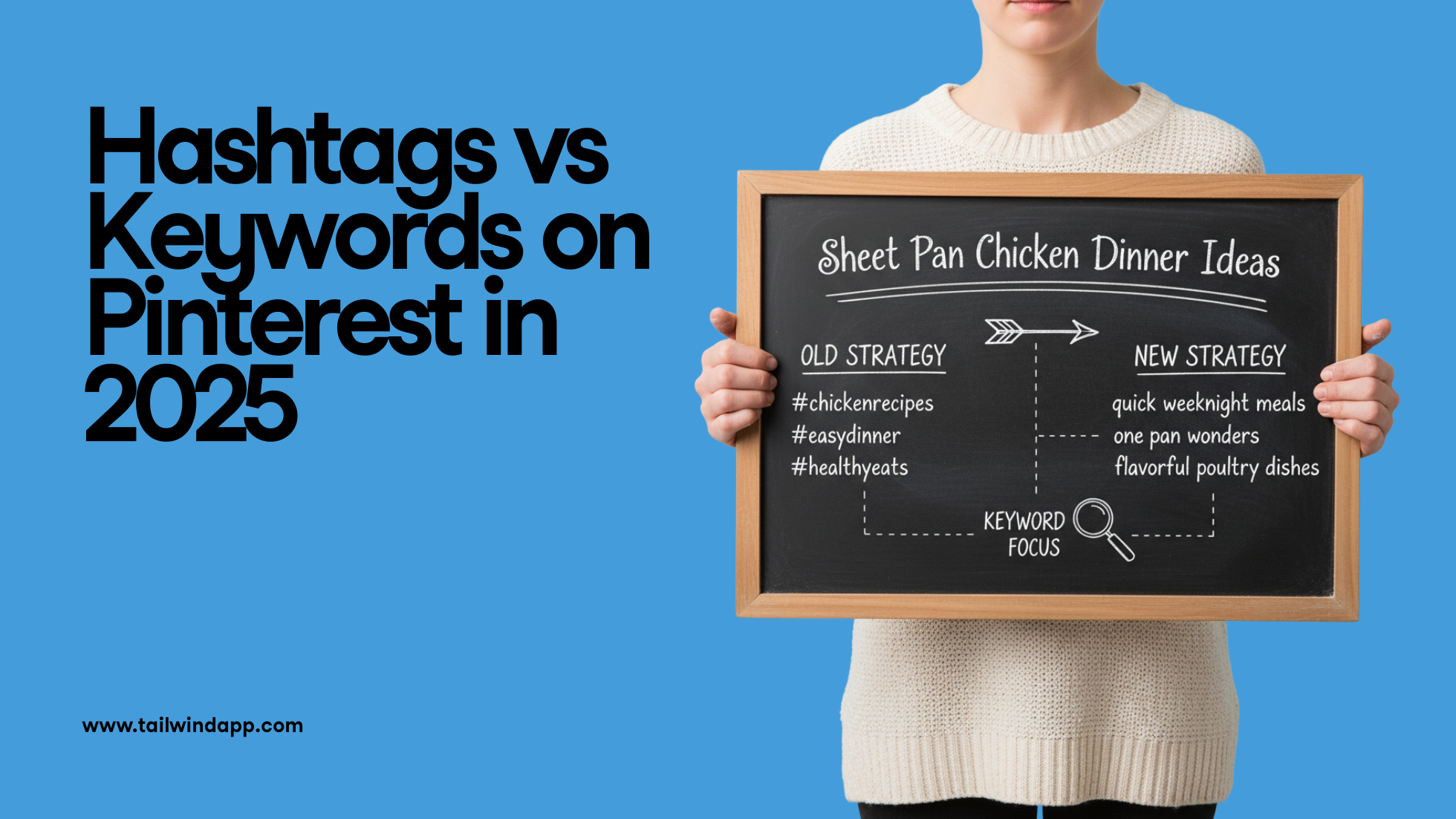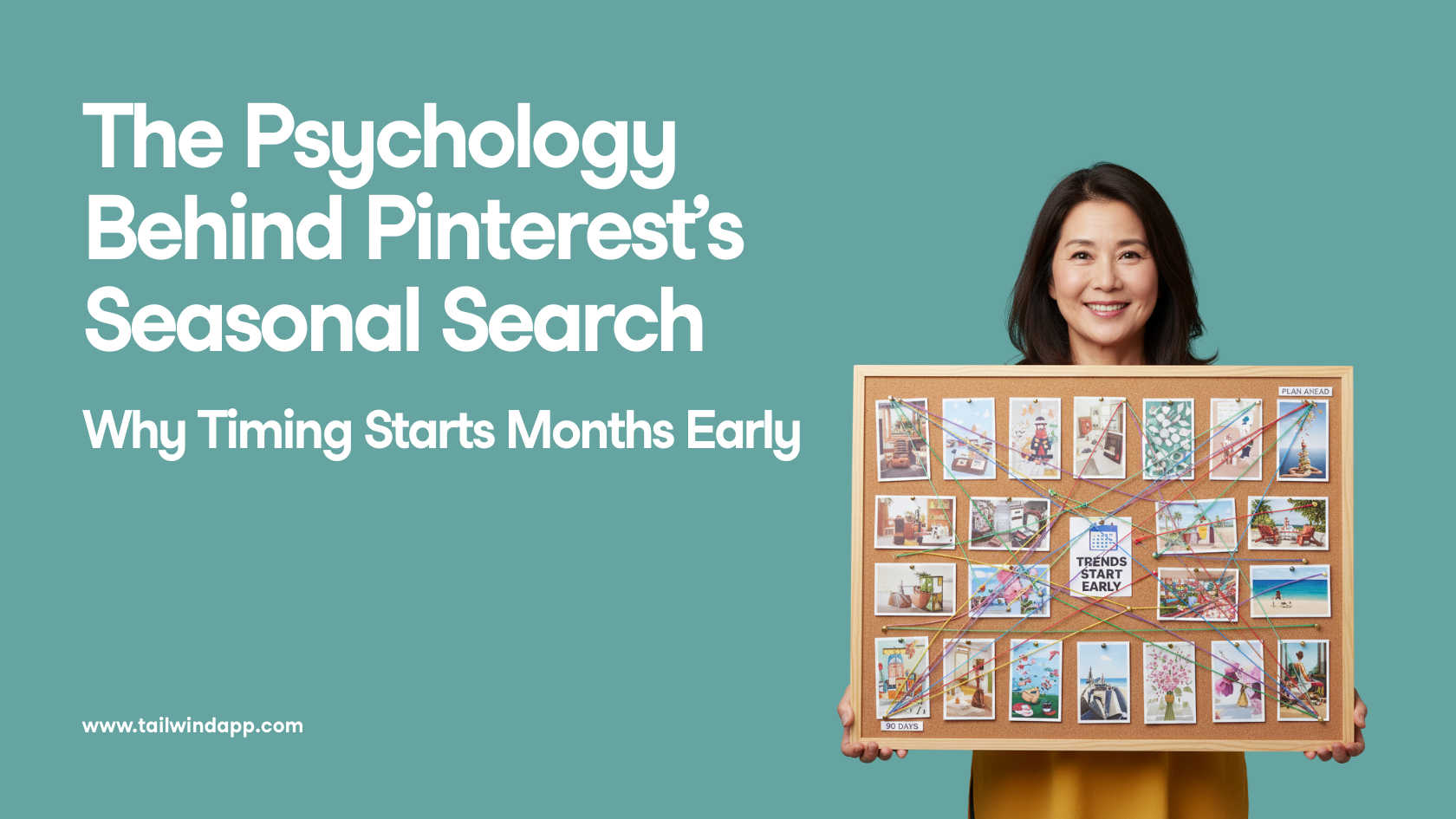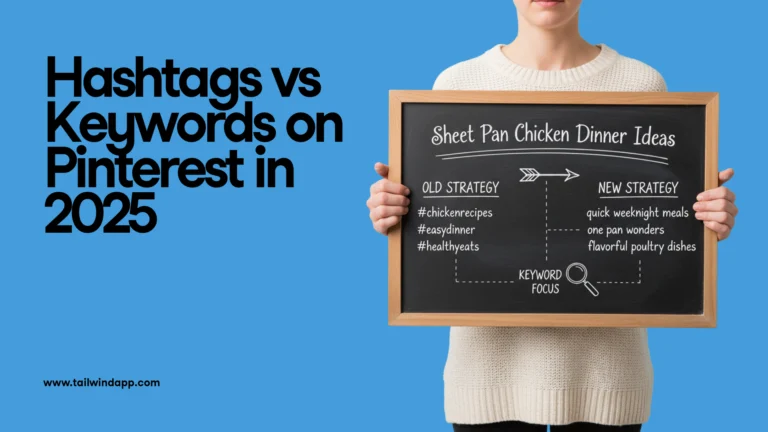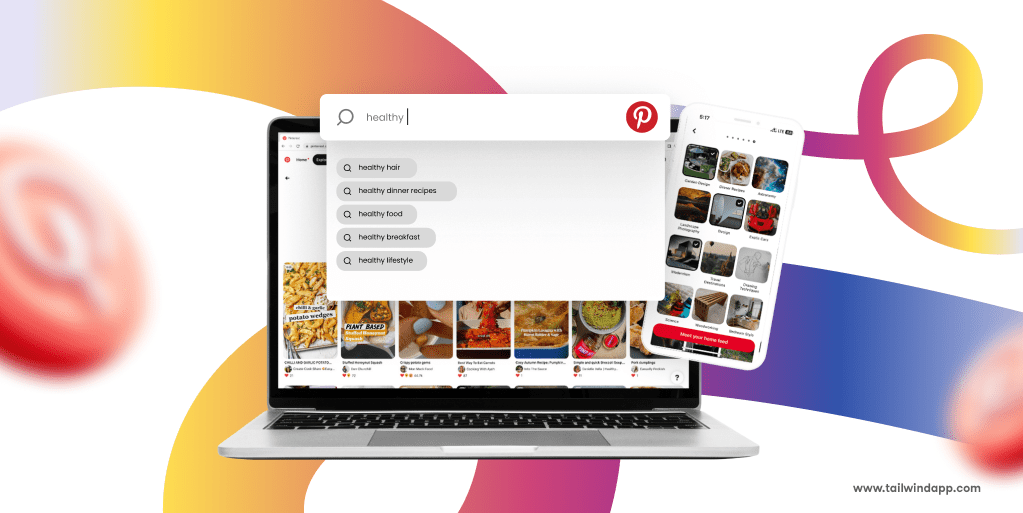
Though Pinterest is a visual search engine, at its heart lies keyword optimization.
When users search on Pinterest, the platform’s algorithm determines which Pins to display based largely on keywords and relevance. Understanding and implementing an effective Pinterest keyword strategy can dramatically increase your content visibility, engagement, and website traffic.
In this comprehensive guide, you’ll learn everything you need to know about Pinterest keywords — from finding the right terms to implementing them effectively across your Pinterest presence.
What Are Pinterest Keywords?
Pinterest keywords are the search terms and phrases users type into Pinterest’s search bar when looking for specific content.
These keywords act as the bridge between user searches and your Pins, helping the Pinterest algorithm understand what your content is about and when to show it.
Pinterest’s search algorithm works similarly to Google’s but with a visual focus.
It analyzes text in Pin titles, descriptions, and even the images themselves to determine relevance to user searches. The algorithm also considers factors like Pin engagement, account authority, and content freshness.
Unlike traditional SEO keywords focused primarily on website content, Pinterest keywords often include more visual and action-oriented terms.
For example, while someone might search “content marketing tips” on Google, on Pinterest they might search “content marketing infographic ideas” or “Instagram content planning template.”
Why Pinterest Keywords Matter
Implementing the right Pinterest keywords is crucial for several reasons:
Increased Pin Visibility: Without proper keyword optimization, your Pins may never reach your target audience, regardless of how visually appealing they are. The Pinterest algorithm relies heavily on keywords to understand and categorize content.
Sustainable Traffic Source: Well-optimized Pins can generate traffic for months or years. Unlike Instagram or Facebook posts that typically have a lifespan of hours or days, Pinterest content has remarkable longevity when properly optimized with the right keywords.
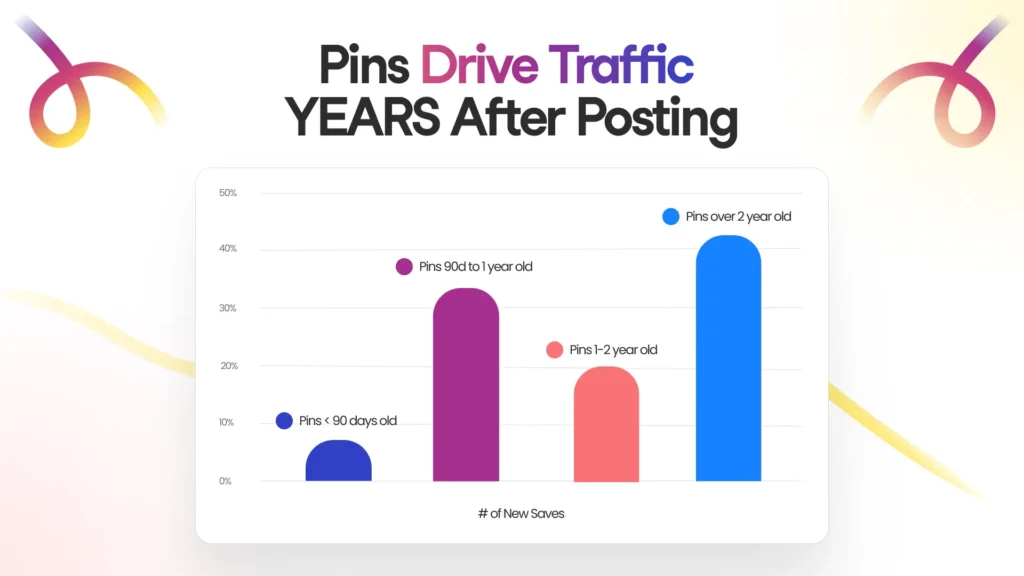
Higher Conversion Rates: Users on Pinterest often have high purchase intent — they’re actively searching for solutions, products, or ideas. Meeting them with the right keywords increases the likelihood of conversion.
Competitive Edge: Many businesses underutilize Pinterest keyword optimization, creating an opportunity for those who implement a strategic approach to stand out.
How to Find the Right Pinterest Keywords
Discovering effective Pinterest keywords requires a combination of platform-specific research and strategic thinking. Here are the most effective methods:
Pinterest Search Bar Suggestions
The simplest way to discover relevant keywords is through Pinterest’s search bar. As you type, Pinterest displays popular and trending searches related to your query. These suggestions are based on actual user search behavior, making them extremely valuable.
For example, typing “home office” might suggest completions like “home office desk ideas,” “home office organization,” or “small home office setup.”
Free Pinterest Keyword Tool by Tailwind
Analyze the keywords, spot the trends, and find which phrases will be best for your business with our own Pinterest Keyword Research Tool!
Guided Search Recommendations
After you enter a search term, Pinterest displays colorful buttons beneath the search bar with additional keyword suggestions to narrow your search. These guided search recommendations provide insight into popular subcategories and can inspire your keyword strategy.

Trending Section Analysis
Every day you have access to trending and timely topics that are covered on Pinterest. By analysing those, you can get many ideas on what content to post that day and where to steer your short-term content strategy.
Regularly check Pinterest’s Today section to identify seasonal or trending topics in your niche. Incorporating these timely keywords can give your Pins a visibility boost during peak interest periods.
Pinterest Trends Tool
Pinterest offers a free Trends tool that shows the popularity of specific search terms over time. This tool helps you identify seasonal patterns and compare the performance of different keywords.
Audience Research Techniques
Understanding your target audience’s language and search behavior is crucial for effective keyword selection. Research how your audience describes your products or services by:
- Reviewing comments on your Pins
- Analyzing customer reviews and feedback
- Studying forums and communities where your audience is active
- Surveying your audience directly about their Pinterest search habits
Types of Pinterest Keywords to Target
For a comprehensive Pinterest keyword strategy, consider incorporating these different types of keywords:
Broad/Seed Keywords
These are short, generic terms with high search volume but also high competition.
Examples include “vegan recipes,” “home decor,” or “workout tips.” While important as a foundation, relying solely on broad keywords makes it difficult to stand out.
Long-tail Keywords
These longer, more specific phrases typically have lower search volume but higher conversion potential. Examples include “15-minute vegan breakfast recipes” or “small apartment Scandinavian living room ideas.”
Seasonal and Trending Keywords
Incorporate keywords related to upcoming holidays, seasons, or trends. Pinterest users often search for seasonal content months in advance, so timing is crucial. Examples include “fall outfit ideas,” “Christmas table setting,” or “summer salad recipes”.
Action-oriented Keywords
Pinterest users often search with action intent — they want to do something with the information they find. Keywords like “how to,” “DIY,” “tutorial,” or “ideas” perform well.
Product-specific Keywords
If you’re selling products, include specific keywords that describe your offerings, such as materials, colors, styles, or use cases. For example, “gold minimalist necklace” or “wooden farmhouse coffee table”.
Where to Use Pinterest Keywords
To maximize your Pinterest SEO, strategically place keywords in these key locations:
Pin Titles
Your Pin title should clearly describe the content while incorporating primary keywords. Aim for descriptive, compelling titles under 100 characters.
For example: “10 Easy Mediterranean Diet Meal Prep Ideas for Beginners | Healthy Lunch Recipes”
Pin Descriptions
Pin descriptions allow for more detailed keyword inclusion. Use 1-2 sentences with your most important keywords placed naturally within the first 50-60 characters. Include a mix of primary and secondary keywords, but ensure the text flows naturally.
Example: “These Mediterranean diet meal prep ideas are perfect for healthy weekday lunches. Learn how to prepare simple, nutritious meals using olive oil, fresh vegetables, and lean proteins. #mealprep #mediterraneandiet #healthyrecipes”
Board Names and Descriptions
Name your boards with clear, keyword-rich titles that users might search for. In board descriptions, include additional relevant keywords while maintaining natural language.
Profile Optimization
Your Pinterest business profile should include keywords relevant to your overall niche and offerings. Include these in your display name (when appropriate) and bio.
Alt Text for Images
Pinterest extracts image alt text from your website when Pins are created. Ensure these descriptions are keyword-rich and accurately describe the image content.
URL Structure Considerations
If creating a dedicated landing page for Pinterest traffic, incorporate relevant keywords in the URL structure for additional SEO benefits.
Hashtags
Our data suggests that Pinterest will scan hashtags to pull out the keywords in the hashtag.
Pinterest Keyword Research Tools
Tailwind’s Pinterest Keyword Finder
Tailwind’s Pinterest Keyword Finder is a specialized tool designed specifically for Pinterest keyword research. As an official Pinterest Partner, Tailwind offers insights directly relevant to the platform.
The tool is especially valuable for identifying long-tail keyword opportunities that might be missed through manual research. By revealing the actual search volume for specific terms, it helps prioritize your keyword strategy based on data rather than guesswork.
To use Tailwind’s Pinterest Keyword Finder effectively:
- Start with broad seed keywords relevant to your niche
- Review the suggested related terms and their search volumes
- Create clusters of related keywords for different content themes
- Identify seasonal patterns to plan content timing
- Export your keyword lists for implementation in your Pinterest strategy
Best Practices for Pinterest Keyword Strategy
Follow these best practices to maximize the effectiveness of your Pinterest keyword strategy:
Keyword Mapping for Different Content
Create a systematic approach by mapping specific keywords to different content types, boards, and campaigns. This organization helps ensure comprehensive coverage without keyword cannibalization.
Avoiding Keyword Stuffing
While keywords are important, Pinterest’s algorithm (like Google’s) can detect and penalize keyword stuffing. Focus on natural integration that enhances rather than detracts from user experience.
Maintaining Natural Language
Write for humans first, algorithms second. Your descriptions and titles should read naturally while incorporating strategic keywords.
Updating Keywords Regularly
Pinterest trends evolve quickly. Regularly audit and update your keyword strategy based on changing search behaviors and seasonal trends.
A/B Testing Different Keywords
Test different keyword combinations for similar content to identify which terms drive the most engagement and traffic. Pinterest Analytics can help track performance differences.
Measuring Pinterest Keyword Success
To evaluate and refine your Pinterest keyword strategy, focus on these key metrics:
Key Metrics to Track
- Impression Growth: Are more people seeing your Pins?
- Engagement Rate: Are users interacting with your Pins (saves, clicks)?
- Click-through Rate: Are users visiting your website?
- Conversion Rate: Are Pinterest visitors completing desired actions on your site?
- Search Visibility: How well are your Pins ranking for target keywords?
Pinterest Analytics Overview
Pinterest’s built-in analytics provide valuable insights into which Pins and keywords are performing best. Pay special attention to:
- Top Pin performance
- Audience interests
- Most clicked Pins
- Most saved Pins
- Traffic sources within Pinterest
- Home feed: People seeing your Pins in their personalized Pinterest home feed
- Search results: Users finding your Pins when they search for specific keywords
- Following tab: People who follow your account seeing your Pins
- Related Pins: Your Pins appearing in the “More like this” section below other Pins
- Board views: People discovering your Pins by browsing your boards or other users’ boards
Adjusting Strategy Based on Performance
Use your analytics data to continuously refine your keyword approach:
- Double down on high-performing keywords
- Expand on topics showing strong engagement
- Reconsider or revise underperforming content
- Identify new keyword opportunities based on successful patterns
Pinterest Keyword Strategy by Business Type & Niche
Not all Pinterest keyword strategies are created equal. Your business model, industry, and target audience significantly impact which keywords will drive the best results. Here’s how to tailor your keyword approach based on your specific business type and niche:
E-commerce & Product-Based Businesses
Product-focused businesses should prioritize keywords that capture purchase intent and product discovery moments.
Keyword Priorities:
- Product specifications: Include materials, colors, sizes, and styles (“rose gold minimalist earrings,” “oversized denim jacket women”).
- Use cases and occasions: Focus on when/where products are used (“work from home desk setup,” “date night outfit ideas”).
- Problem-solution keywords: Address specific needs your products solve (“small space storage solutions,” “sensitive skin skincare routine”).
- Comparison terms: Help users choose between options (“budget vs luxury skincare,” “cotton vs linen bedding”).
Example Strategy – Handmade Jewelry Business:
- Primary: “handmade silver jewelry,” “minimalist necklace,” “boho earrings”
- Secondary: “jewelry for sensitive skin,” “stackable rings,” “everyday gold necklace”
- Long-tail: “simple silver necklace for work,” “hypoallergenic earrings for daily wear”
- Seasonal: “Valentine’s Day jewelry gifts,” “summer festival accessories”
Content Creators & Bloggers
Content-driven businesses should focus on educational and inspirational keywords that build authority and drive traffic.
Keyword Priorities:
- How-to and tutorial terms: Capture users seeking to learn (“how to meal prep,” “beginner yoga poses”)
- List-based keywords: Pinterest users love numbered lists (“10 budget decorating tips,” “5 morning routine ideas”)
- Inspirational terms: Focus on aspiration and goals (“minimalist lifestyle,” “healthy family recipes”)
- Niche expertise keywords: Establish authority in your specific area (“plant-based nutrition,” “small business marketing”)
Example Strategy – Food Blogger:
- Primary: “healthy recipes,” “meal prep ideas,” “quick dinner recipes”
- Secondary: “gluten-free desserts,” “one-pot meals,” “kid-friendly lunches”
- Long-tail: “30-minute vegetarian dinner recipes,” “make-ahead breakfast ideas for busy mornings”
- Seasonal: “summer salad recipes,” “holiday cookie recipes,” “back-to-school lunch ideas”
Service-Based Businesses
Service providers should target keywords that demonstrate expertise and address client pain points.
Keyword Priorities:
- Problem-focused keywords: Address specific challenges your services solve (“small business marketing struggles,” “home organization overwhelm”)
- Before/after scenarios: Show transformation potential (“kitchen renovation ideas,” “website redesign inspiration”)
- Industry-specific terms: Use professional language your ideal clients search for (“brand identity design,” “SEO strategy”)
- Local keywords: Include location-based terms when relevant (“Denver wedding photographer,” “NYC interior designer”)
Example Strategy – Wedding Planner:
- Primary: “wedding planning tips,” “wedding timeline,” “budget wedding ideas”
- Secondary: “outdoor wedding inspiration,” “small wedding ideas,” “wedding vendor checklist”
- Long-tail: “how to plan a wedding in 6 months,” “destination wedding planning guide”
- Seasonal: “spring wedding flowers,” “fall wedding color schemes,” “holiday wedding ideas”
Niche-Specific Keyword Patterns
Different industries have unique keyword behaviors and opportunities. Here’s how to identify patterns in your niche:
Home & Decor:
- Style keywords dominate: “farmhouse,” “minimalist,” “boho,” “industrial”
- Room-specific terms: “small living room ideas,” “master bedroom decor”
- Budget considerations: “DIY home decor,” “budget decorating,” “affordable furniture”
- Seasonal trends: “spring home refresh,” “cozy fall decor,” “holiday decorating”
Fashion & Beauty:
- Trend-driven keywords: “2025 fashion trends,” “summer makeup looks”
- Body/face-specific terms: “outfits for pear shape,” “makeup for hooded eyes”
- Occasion-based: “work outfits,” “date night makeup,” “casual weekend style”
- Age/demographic targeting: “fashion over 40,” “teen makeup tutorials”
Health & Fitness:
- Goal-oriented keywords: “weight loss tips,” “muscle building workouts”
- Time-based terms: “10-minute workout,” “quick healthy meals”
- Equipment-specific: “home workout no equipment,” “resistance band exercises”
- Dietary specifications: “keto recipes,” “plant-based protein,” “gluten-free meal prep”
Business & Marketing:
- Strategy keywords: “content marketing strategy,” “small business tips”
- Tool-specific terms: “Canva templates,” “email marketing ideas”
- Industry targeting: “restaurant marketing,” “real estate social media”
- Skill-building: “learn graphic design,” “photography tips for beginners”
Competitive Landscape Analysis by Niche
Understanding your competitive environment helps identify keyword opportunities others might be missing:
Saturated Niches (High Competition):
- Focus on hyper-specific long-tail keywords
- Target underserved sub-niches within your industry
- Emphasize unique angles or approaches
- Example: Instead of “weight loss tips,” try “weight loss tips for busy teachers” or “postpartum weight loss without gym”
Emerging Niches (Lower Competition):
- Establish authority with broader keywords early
- Create comprehensive content around new trends
- Monitor trending topics in your industry
- Example: “AI tools for small business” or “sustainable fashion for kids”
Seasonal Niches:
- Plan content calendar around peak search times
- Create evergreen content with seasonal keywords
- Target shoulder seasons when competition is lower
- Example: “Christmas decorations” peaks in October-November, but “winter home decor” has less competition
Keyword Strategy by Customer Journey Stage
Align your keywords with where your audience is in their decision-making process:
Awareness Stage Keywords:
- Problem identification: “why am I always tired,” “small space challenges”
- Educational content: “what is meal prep,” “types of yoga for beginners”
- Inspiration-seeking: “home office inspiration,” “healthy lifestyle ideas”
Consideration Stage Keywords:
- Solution exploration: “meal prep containers comparison,” “best home workout programs”
- How-to content: “how to start meal prepping,” “beginner workout routine”
- Options evaluation: “gym vs home workout,” “organic vs conventional skincare”
Decision Stage Keywords:
- Product-specific: “best meal prep containers 2025,” “top-rated yoga mats”
- Reviews and comparisons: “Instant Pot vs slow cooker,” “affordable workout equipment”
- Purchase intent: “where to buy,” “discount codes,” “best deals”
Industry-Specific Seasonal Patterns
Different industries have unique seasonal keyword cycles. Plan your content strategy around these patterns:
Fitness Industry:
- January: “New Year workout plans,” “home gym setup”
- March-May: “summer body workouts,” “beach body preparation”
- September: “fall fitness routines,” “back-to-school healthy habits”
- November-December: “holiday workout schedule,” “staying fit during holidays”
Home Decor:
- January-February: “winter decor,” “cozy home ideas”
- March-May: “spring cleaning,” “spring home refresh”
- June-August: “summer patio decor,” “bright home ideas”
- September-December: “fall decorating,” “holiday home decor”
Fashion:
- 2-3 months before season: “spring fashion trends,” “fall wardrobe essentials”
- Event-driven: “graduation outfits,” “holiday party dresses”
- Back-to-school: “teacher outfits,” “college fashion”
- Wedding season: “wedding guest outfits,” “summer wedding attire”
Implementing Your Business-Specific Strategy
Follow these steps to create a keyword strategy tailored to your business:
- Identify your business model: Determine whether you’re primarily e-commerce, content, or service-based.
- Research niche-specific patterns: Study successful accounts in your industry to identify keyword trends.
- Map keywords to customer journey: Create content that serves users at different decision stages.
- Plan seasonal content: Develop a calendar based on your industry’s peak search periods.
- Test and refine: Monitor performance and adjust your strategy based on what works in your specific niche.
Remember: the most effective Pinterest keyword strategy is one that authentically represents your business while meeting your audience exactly where they are in their search journey. Focus on serving your specific community rather than trying to appeal to everyone.
Common Pinterest Keyword Mistakes to Avoid
Even experienced marketers make these common Pinterest keyword mistakes:
Targeting Only High-Competition Terms
Focusing exclusively on broad, high-competition keywords makes it difficult to stand out. Balance your strategy with specific long-tail keywords where you can more easily rank.
Ignoring User Intent
Understanding why users are searching for particular terms is crucial. Are they looking for inspiration, tutorials, or products to purchase? Align your content with user intent for better engagement.
Inconsistent Keyword Usage
Using different terms across your Pins, boards, and profile creates confusion for both users and the Pinterest algorithm. Maintain consistency in your core keyword themes.
Neglecting Seasonal Trends
Pinterest users often search for seasonal content months in advance. Missing these seasonal keyword opportunities means missing significant traffic potential.
Conclusion
A strategic approach to Pinterest keywords can transform your Pinterest presence from a passive visual showcase to a powerful traffic and conversion engine.
By understanding how the Pinterest algorithm works and implementing keywords strategically across your Pins, boards, and profile, you can significantly increase your content’s visibility and effectiveness.

